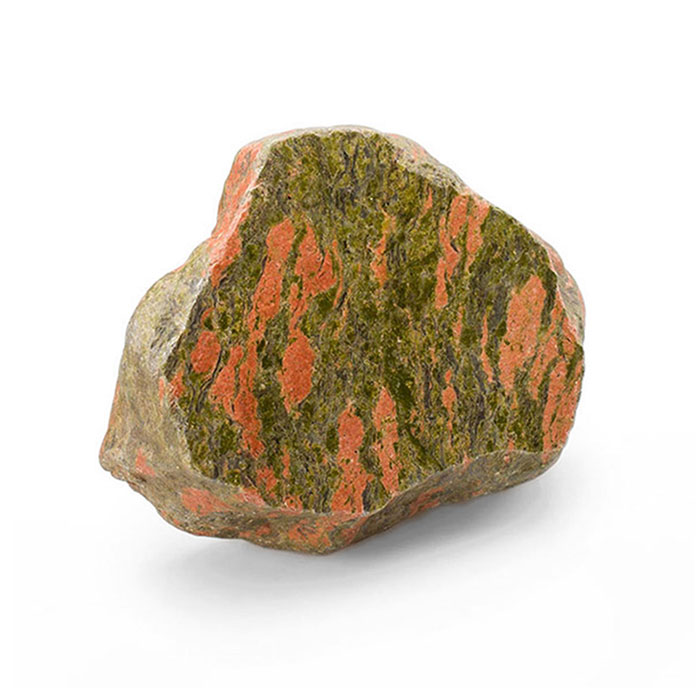Labradorite Properties, Meaning, Facts and Photos

| Contents 1. What is Labradorite? 2. Labradorite Geological Properties 3. More About Labradorite 4. Labradorite Healing Properties 5. Article Photos 6. Shop Labradorite |
What is Labradorite?
Labradorite is a feldspar mineral, one of the most abundant groups of minerals in Earth's crust.
Although many of these rock-forming minerals exhibit iridescence, labradorite and moonstone are best known for this optical phenomenon.
The iridescence is caused by the reflection and scattering of light. The colours we see are the reflection of light, so are not in the stone itself.
The name Labradorite comes from the Labrador region of Canada, where the stone was first discovered.
In 1770, Czech missionary Father Adolf found a large quantity of strange-looking stones on the east shore of the Labrador peninsula. Although they were a dull grey colour, flashes of blue and green could be seen in the reflection of light.
Labradorite was later identified as a feldspar mineral containing sodium and calcium. Since then, it has been found in several locations around the world, including Australia, Finland, Italy, Norway and Ukraine.
It's extremely common for rocks and minerals to be named after the person who discovered them or the place where they were found. The suffix 'ite' is often used. Examples include sugilite, named after Professor Kenichi Sugi, unakite, which took its name from the Unaka Range of mountains in North Carolina and pietersite, named after Syd Pieters.
There's even a stone called Englishite.

Labradorite Geological Properties
Labradorite can be a fascinating stone, especially when polished. Although some material can initially look uninteresting, with the interaction of light it can become quite spectacular.
The finest grade labradorite exhibits vivid flashes of blue or green. Red, yellow and grey can also sometimes be seen.
Labradorite is known for being iridescent so the word 'labradorescence' was coined to describe this optical phenomenon.
Alternative words to describe similar effects in other stones include aventurescence for aventurine, adularescence for moonstone, and schiller which is used for moonstone and sunstone but can also be used for labradorite.
'Schiller' comes from German, but the precise meaning varies depending on the text you read. I've seen it translated as twinkle, iridescence, and colour play, which apparently comes from 'schillern'. The meaning of 'schiller' has changed as German has evolved.
Optical phenomena are common in rocks and minerals. In labradorite, labradorescence is caused as light is scattered and reflected from beneath the surface of the stone. Colours can be pretty impressive, but capturing them well in a photograph is not always easy.
More About Labradorite
Labradorite from the north-central coast of Labrador in Canada is some of the finest in the world. Exceptional-grade stone can also be found in Finland, specifically Lapland. This material is better known as spectrolite.
Highly translucent gemstones with fantastic schiller come from southern India. Labradorite suitable for faceting is found in Mexico, while dark grey material comes mostly from Madagascar.
Like most feldspar minerals, labradorite is relatively hard but also brittle, which can make cutting difficult. On the Mohs scale of hardness, it grades 6 to 6.5.
Healing Properties of Labradorite
Labradorite is a stone of transformation that offers protection and raises consciousness.
When going through a significant change in life, labradorite provides strength and perseverance.
It stimulates the third eye chakra, enhances psychic ability, sharpens intuition and acts as a reflective shield to protect the aura from unwanted energy.
Labradorite promotes holistic healing on multiple levels, taking into account the physical, emotional, mental and spiritual aspects of life.
It addresses imbalances and restores optimal energy flow. Its soothing effect can help with anxiety and emotional turmoil. It promotes stability, resilience, and a sense of peace and contentment.
The iridescent properties of labradorite spark creativity, enhance imagination and inspire new ideas and artistic expression. It can be used to encourage a flow of inspiration and help overcome creative blocks.
Labradorite supports adaptability and resilience in the face of challenges and change. This is beneficial because it empowers us to navigate through difficult situations and stages of life with greater ease.
With all the twists and turns we encounter, remaining resilient allows us to face challenges head-on and find constructive solutions.
Labradorite facilitates a deeper connection to our spiritual self. It enhances awareness, inner wisdom and a sense of wholeness with the universe.
When used for meditation, a labradorite stone can be held in your hand or placed on or close to a chakra point. Its presence is believed to enhance focus, deepen relaxation and facilitate a connection to its specific energies.
Article Photos
The first labradorite stone in our article is from our collection. The second two images are courtesy of Jay Stant.Pop-up photos: The sugilite and unakite were once part of our collection. Moonstone - Courtesy of Géry Parent. Pietersite - Courtesy of Captain Tenneal. Labradorite - Courtesy of James St. John.



















